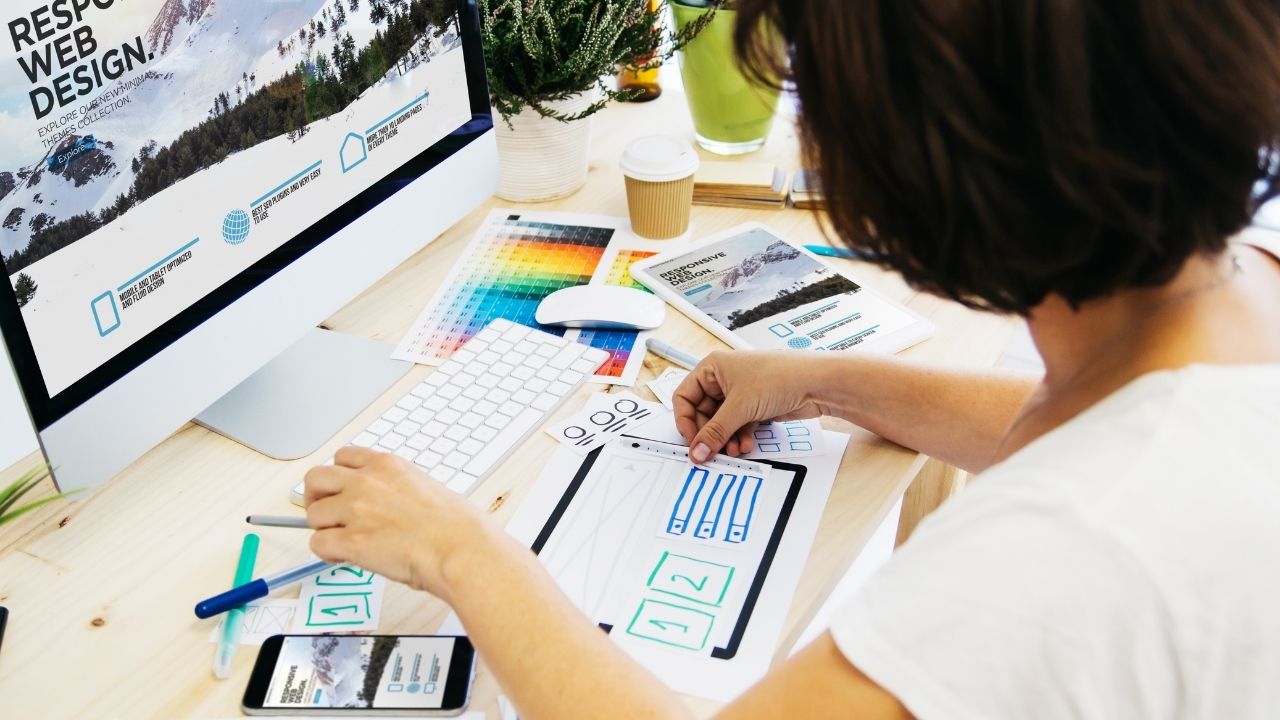Are you looking to create websites that really connect with your users on an emotional level? Look no further! In this article, we'll show you how to design websites that elicit powerful responses from your visitors.
By understanding the role of emotions in web design and incorporating color psychology, engaging visuals, and storytelling techniques, you'll be able to optimize user experience and create a lasting impact.
Get ready to captivate your audience like never before!
Key Takeaways
- Typography plays a crucial role in evoking emotions in web design, and the choice of fonts, sizes, and styles can convey different emotions.
- Color symbolism and emotional triggers greatly impact user engagement, with different colors evoking different emotions and associations.
- Visuals, such as interactive animations and minimalist design, can enhance user engagement and help users navigate the website easily.
- Storytelling techniques, including narrative elements and user empathy, create a lasting impact and make the website memorable for users.
Understanding the Role of Emotions in Web Design
Understanding the role of emotions in web design is essential for eliciting user responses.
When it comes to evoking emotions through web design, typography plays a powerful role. The choice of fonts, sizes, and styles can all convey different emotions and set the tone for the user's experience. For example, using bold and large fonts can create a sense of urgency or excitement, while elegant and delicate fonts can evoke feelings of sophistication and elegance.
Additionally, user feedback plays a crucial role in emotional web design. By listening to and analyzing user feedback, designers can understand what aspects of the design elicit the desired emotional responses and make necessary adjustments. This iterative process ensures that the design effectively connects with users on an emotional level.
Incorporating Color Psychology to Evoke User Responses
To create a website that evokes specific user responses, it's crucial to incorporate color psychology. Utilizing color symbolism and implementing emotional triggers can greatly impact the way users engage with your website.

Color symbolism refers to the meanings and associations that different colors evoke in people. For example, blue is often associated with calmness and trust, while red can signify passion and urgency. By strategically choosing colors that align with the emotions you want to elicit, you can create a more immersive and persuasive user experience.
Additionally, implementing emotional triggers through color can prompt immediate responses from users. For instance, using a vibrant yellow button can create a sense of excitement and encourage users to take action.
Creating Engaging Visuals to Captivate Users
Creating engaging visuals can captivate users and keep them interested in exploring your website. One effective way to achieve this is by incorporating interactive animations into your design.
These animations not only add a dynamic element to your website, but they also provide users with an interactive and immersive experience. By allowing users to interact with elements on your site, you can create a sense of engagement and involvement that can make your website more memorable.
Additionally, a minimalist design can also contribute to creating engaging visuals. By focusing on clean lines, simple typography, and ample white space, you can create a visually appealing and clutter-free design that allows your content to take center stage.
This simplicity can help users navigate your website more easily and stay focused on the content that matters most.
Using Storytelling Techniques to Connect With Users
When telling a story on your website, think about how it can emotionally connect with your audience and keep them engaged. Utilizing narrative elements and harnessing user empathy are crucial in creating a website that leaves a lasting impact.

By incorporating storytelling techniques, you can create a connection with your users that goes beyond simple information sharing. A well-crafted narrative can evoke emotions, capture attention, and make your website memorable.
Consider using elements such as compelling characters, relatable conflicts, and powerful imagery to engage your audience on an emotional level. By tapping into the power of storytelling, you can create a website that not only informs but also inspires and resonates with your users.
Optimizing User Experience for Emotional Engagement
By incorporating storytelling techniques, you can create a website that emotionally connects with your audience and keeps them engaged.
Emotional storytelling is a powerful tool in user interface design, as it allows you to tap into the emotions of your users and create a more immersive experience.
When users feel emotionally connected to a website, they are more likely to stay engaged and explore further.
To optimize user experience for emotional engagement, consider incorporating elements such as compelling narratives, relatable characters, and visually appealing design.
Use storytelling to guide users through your website and evoke specific emotions that align with your brand or message.

Frequently Asked Questions
How Can Emotions Play a Role in Web Design and User Experience?
When designing websites, emotions play a crucial role in user experience. By incorporating emotional design elements, such as vibrant colors and captivating visuals, you can enhance user engagement and create a memorable online experience.
What Are Some Key Principles of Color Psychology That Can Be Applied to Web Design?
To create an emotionally impactful website, consider color symbolism and the impact of typography. These principles of color psychology can be applied to web design to evoke specific emotions and enhance the user experience.
How Can Visuals Be Used to Capture the Attention and Interest of Users?
To capture users' attention and interest, use visual storytelling techniques that create a psychological impact. Incorporate compelling images, videos, and graphics that evoke emotions and tell a story, ensuring a memorable and engaging user experience.
What Are Some Effective Storytelling Techniques That Can Be Utilized in Web Design to Establish a Connection With Users?
To establish a connection with users through design, use effective storytelling techniques in web design. These techniques can engage users on an emotional level, creating a more meaningful and impactful browsing experience.
What Are Some Strategies for Optimizing User Experience to Create Emotional Engagement on a Website?
To optimize user experience and create emotional engagement, incorporate personalization techniques and interactive elements. By tailoring the website to individual preferences and using features that encourage user participation, you can elicit strong emotional responses.
Conclusion
In conclusion, designing websites for emotional impact is crucial in eliciting strong user responses. By understanding the role of emotions in web design and incorporating color psychology, websites can evoke specific emotions in users.
Engaging visuals and storytelling techniques further captivate users and create a connection. Optimizing the user experience for emotional engagement ensures that users have a positive and memorable experience on the website.

So, when designing your website, remember to prioritize emotional impact to create a truly impactful and engaging user experience.

